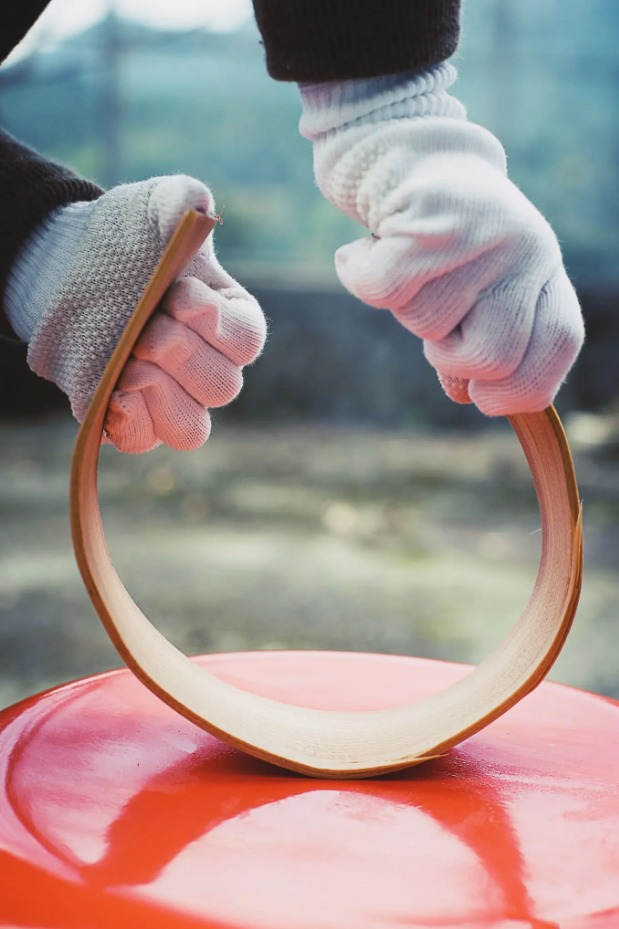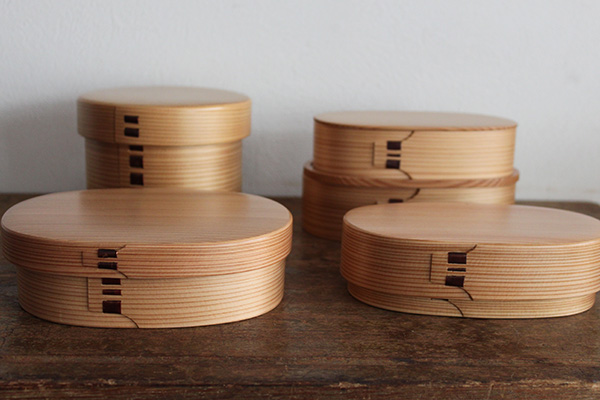There are no products listed under this category.
Odate Bentwood History
Akita prefecture is a cradle of many national crafts. Its abundance in beautiful nature has been essential for various art industries, including "Odate Bentwood" also known as Mage-wappa. Odate is a city in Akita. Their wood is particularly appreciated for its magnificent grain, exceptional aroma, flexibility and ring structure. In 1980, Mage-wappa was certified "Traditional Crafts of Japan".
The history of bentwood art dates back to 1600, during which low rank warriors tried to support the local economy by crafting cedar wood items during times without battle. Gradually, the artworks became more complex and the productivity increased, growing out to the bentwood industry as it is today.
The logging of naturally grown Akita cedar has recently been prohibited for forest preservation.
Therefore, current production of Odate mage-wappa is done with 200-year-old cedar that was stocked before the banning, and 100-year-old cedar that was planted specifically for this craft.
Production
Natural Akita cedar is first peeled - by hand or with a sawmill. The peeled wood is then placed in hot water until it has softened. It is then pulled out of the water and wrapped around a special roller to bend it. The overlapping piece of wood is fixed so that everything stays together, and then the constriction is allowed to air dry naturally. Once it has dried, the overlapping flaps are glued together. The overlapping parts are tied together by pieces of Sakura cherry tree bark that are very contrasted. Finally, the lid and bottom are inserted and glued to finish the product.







